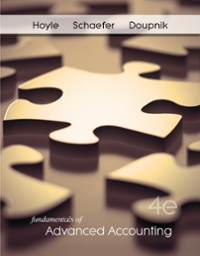Question
The management of Zigby Manufacturing prepared the following estimated balance sheet for March 2017: ZIGBY MANUFACTURING Estimated Balance Sheet March 31, 2017 Assets Cash $
The management of Zigby Manufacturing prepared the following estimated balance sheet for March 2017:
ZIGBY MANUFACTURING
Estimated Balance Sheet
March 31, 2017
Assets
Cash
$
80,000
Accounts receivable
364,000
Raw materials inventory
96,000
Finished goods inventory
364,800
Total current assets
904,800
Equipment, gross
610,000
Accumulated depreciation
(155,000
)
Equipment, net
455,000
Total assets
$
1,359,800
Liabilities and Equity
Accounts payable
$
195,500
Short-term notes payable
17,000
Total current liabilities
212,500
Long-term note payable
510,000
Total liabilities
722,500
Common stock
340,000
Retained earnings
297,300
Total stockholders' equity
637,300
Total liabilities and equity
$
1,359,800
To make a master budget for April, May, and June of 2017, management gathers the following information:
- Sales for March total 20,000 units. Forecasted sales in units are as follows: April, 20,000; May, 19,000; June, 19,500; and July, 20,000. Sales of 245,000 units are forecasted for the entire year. The product's selling price is $26.00 per unit and its total product cost is $22.80 per unit.
- Company policy calls for a given month's ending raw materials inventory to equal 50% of the next month's materials requirements. The March 31 raw materials inventory is 4,800 units, which complies with the policy. The expected June 30 ending raw materials inventory is 4,500 units. Raw materials cost $20 per unit. Each finished unit requires 0.50 units of raw materials.
- Company policy calls for a given month's ending finished goods inventory to equal 80% of the next month's expected unit sales. The March 31 finished goods inventory is 16,000 units, which complies with the policy.
- Each finished unit requires 0.50 hours of direct labor at a rate of $20 per hour.
- Overhead is allocated based on direct labor hours. The predetermined variable overhead rate is $3.20 per direct labor hour. Depreciation of $23,400 per month is treated as fixed factory overhead.
- Sales representatives' commissions are 6% of sales and are paid in the month of the sales. The sales manager's monthly salary is $3,500.
- Monthly general and administrative expenses include $17,000 administrative salaries and 0.9% monthly interest on the long-term note payable.
- The company expects 30% of sales to be for cash and the remaining 70% on credit. Receivables are collected in full in the month following the sale (none are collected in the month of the sale).
- All raw materials purchases are on credit, and no payables arise from any other transactions. One month's raw materials purchases are fully paid in the next month.
- The minimum ending cash balance for all months is $45,000. If necessary, the company borrows enough cash using a short-term note to reach the minimum. Short-term notes require an interest payment of 1% at each month-end (before any repayment). If the ending cash balance exceeds the minimum, the excess will be applied to repaying the short-term notes payable balance.
- Dividends of $15,000 are to be declared and paid in May.
- No cash payments for income taxes are to be made during the second calendar quarter. Income tax will be assessed at 35% in the quarter and paid in the third calendar quarter.
- Equipment purchases of $135,000 are budgeted for the last day of June.
Required:
Prepare the following budgets and other financial information as required. All budgets and other financial information should be prepared for the second calendar quarter, except as otherwise noted below. (Round calculations up to the nearest whole dollar, except for the amount of cash sales, which should be rounded down to the nearest whole dollar.):
1. Sales budget.
2. Production budget.
3. Raw materials budget.
4. Direct labor budget.
5. Factory overhead budget.
6. Selling expense budget.
7. General and administrative expense budget.
8. Cash budget.
9. Budgeted income statement for the entire second quarter (not for each month separately).
10. Budgeted balance sheet.
Step by Step Solution
There are 3 Steps involved in it
Step: 1

Get Instant Access to Expert-Tailored Solutions
See step-by-step solutions with expert insights and AI powered tools for academic success
Step: 2

Step: 3

Ace Your Homework with AI
Get the answers you need in no time with our AI-driven, step-by-step assistance
Get Started


